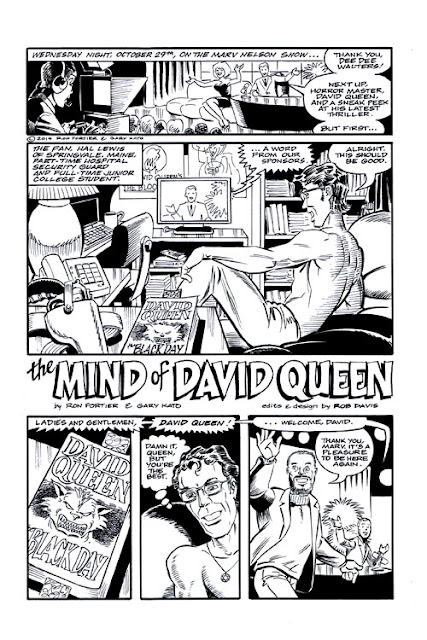“Star Trek
IV: the Voyage Home” is nearing its 31st anniversary. A huge hit in November/December ’86, the film has become arguably the
most cherished of the “Star Trek” movie franchise (old, new or in-between) and one of the most profitable time-travel pictures ever produced. It also continues to gain in popularity: a remarkable feat, considering its age and current, razzmatazz competition.
As Trekkies well know, time travel isn't alien to their sacred universe, with the likes of "City on the Edge of
Forever"; "All Our Yesterdays"; and "Tomorrow is Yesterday" being prime
examples of the acclaimed, Desilu incarnation, not to mention the thematic variations found in its popular offshoots. With the theatrical "Trek" franchise expanding into the '80s, it was
only logical to introduce a big-screen version of the tried-and-true formula.
Directed by
Leonard Nimoy, whose directorial finesse made "Search for Spock" a box-office success, "Voyage Home" is actually the third part of a trilogy, which commenced with the celebrated "Wrath of Khan".
The script, written by Nimoy and Nicholas Meyer
(who directed/penned the highly acclaimed “Wrath”, in addition to the time-travel gem, "Time After Time"), "Voyage Home" offers the resurrected
Commander Spock (Nimoy), retrieved from the defunct Planet
Genesis by his fellow, classic crew mates: now unlikely outcasts due to their daring rescue. The Enterprise has been destroyed, so our crew must "borrow" a Klingon Bird-of-Prey, nicknamed (appropriately enough) the Bounty, to skip intergalactic town. Indeed, circumstances look bleak for our heroes, but fate grants them redemption through an unexpected, world-shaking event.
A "distress" signal has sprung from Earth, the result of a mysterious, extraterrestrial vessel, which stirs upheaval as it searches (and begins to vaporize) the oceans. The probe wants to reconnect with a life form it (or something akin to it) encountered during a long-ago visit:
humpback whales, to be precise. Alas, humpbacks have grown extinct, which
prompts the crew to warp back in time to find some, presuming the results will quell the probe’s frantic sweep.
Admiral Kirk
(William Shatner) catapults the Bounty to 1986 San Francisco, within the proximity of a couple "Cetacean Institute" humpbacks, George and Gracie, who are contained and cared for by the compassionate Dr.
Gillian Taylor (Catherine Hicks).
Kirk and Spock realize that in order to transport the whales, they must first convince Gillian that their mission is sincere. What ensues is an often comedic set of circumstances, with Gillian eventually embracing their cause.
Throughout the good-natured shenanigans, the plot gives our regulars moments to shine: Chekov (Walter Koenig) and Uhura
(Nichelle Nichols) bumbling about as they seek nuclear empowerment for their craft; McCoy (DeForest Kelley) and Scotty (James
Doohan) conning their way into constructing Transparent Aluminum to contain the whales; and Sulu (George Takei) assisting with the transportation of the latter's ever-so-essential panels. (Vulcan and Federation sequences also establish a nostalgic feel, which feature Robin Curtis' Saavik; Jane Wyatt's Amanda; and Mark Leonard's Sarek. Majel Barret and Grace Lee Whitney cameo as Christine Chapel and Janice Rand; and John Schuck's Klingon Ambassador reinforces the film's underlying, Cold War slant: apt for '80s cinema.)

This wonderful, character blend (so vital to "Trek" storytelling) makes "Voyage
Home" a heartfelt, fish-out-of-water romp, with ’86 San
Francisco proving more daunting to our heroes than any aggressive, otherworldly expanse. What we'd otherwise take as common concerns in '86, or even at present (e.g., having correct bus fare or attaining proper medical care), strikes Kirk and crew as perplexing, but never unconquerable.
Also to the film's credit, Kirk and Spock's reestablished relationship occupies much of time, with the reborn, cleric-attired Vulcan assimilating in a dry-humored way to any set of surroundings: a stance that meshes well with Kirk’s supportive zest. Kirk’s relationship with Gillian holds equal grace, with the spunky scientist fitting seamlessly into the calamity. (It seems strange why her congenial presence hasn't entered another, cinematic or television adventure, whether traditional or alternate reality.)
Along with the distinguishing save-the-whales theme, "Voyage Home" solidifies the significance of friendship and duty, handled deftly in "Wrath" and "Search" (and for that matter, "Trek--The Motion Picture", which presented the notion poignantly through Spock after his V'ger meld), but it also promotes the necessity of second chances. And second chances come to those who make the effort, as our dynamic crew demonstrates not only in "Voyage Home", but in their prior, theatrical outings, with Spock having sacrificed his life for his friends and then his friends risking theirs for his. Specifically with "Voyage Home", we find our principals going the ultimate mile to give the humpbacks their second chance, while saving Earth, and along the arduous way, salvaging their reputations (all symbolized by a rousing Leonard Rosenman score that smacks of an epic Christmas carol, underscored with a favorable, nautical rush).

"Voyage Home" isn't merely a euphoric, time-travel tale, but a metaphoric triumph of the spirit. It demonstrates what humans can accomplish when faced with mounting troubles, when they dare to reach their potential and pursue good deeds, no matter how seemingly impossible. This makes the film one of those unique examples that transcends its genre, fating it to remain fashionable and beloved, no matter what the time or place.



















































